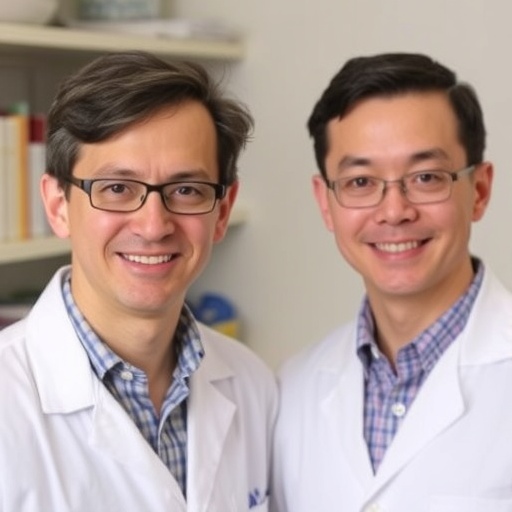Sir2, a member of the sirtuin family of enzymes, has garnered significant attention due to its pivotal role in various cellular processes, most notably its function in protein deacetylation. This enzymatic activity is essential in regulating various biological pathways including metabolism, aging, and even cancer progression. Recent research conducted by a team from the Institute of Science Tokyo offers new insights into the mechanistic intricacies of Sir2’s deacetylation cycle, highlighting a tandem allosteric effect that not only enhances its enzymatic efficiency but also opens avenues for potential therapeutic intervention.
The intricate dance of molecular interactions within biological systems often leads to remarkable outcomes. For Sir2, its deacetylation function is modulated by both the substrates it interacts with and the products it generates. The recent findings suggest that this dynamic is governed by a tandem allosteric mechanism, where the binding of reactants, such as acetylated proteins, induces conformational changes that facilitate subsequent interactions necessary for effective catalysis. This discovery marks a pivotal advancement in our understanding of enzyme regulation and has significant implications for the development of targeted therapies.
At the molecular level, the mechanism of action for Sir2 has been a subject of intense scholarly discussion. Traditionally, it was believed that the enzyme simply catalyzed the removal of acetyl groups from lysine residues on target proteins. Yet, the role of nicotinamide adenine dinucleotide (NAD+) as a co-substrate has been identified as critical for the catalytic activity of Sir2. The enzyme’s structure reveals a co-factor binding loop (CBL), which plays a substantial role in the binding affinity of NAD+. However, past research had left several questions unanswered about how CBL dynamically influences the binding process and the subsequent deacetylation of substrates, such as the tumor suppressor p53.
Professor Akio Kitao and his team leveraged advanced computational techniques, including molecular dynamics simulations, to investigate these unanswered questions. The specific focus was on understanding conformational transitions within Sir2. By simulating Sir2 in multiple states—bound to both acetylated and non-acetylated forms of p53 and in an unbound state—the researchers meticulously mapped how CBL undergoes structural changes in response to substrate binding. The results unveiled a sophisticated allosteric mechanism wherein the substrate binding event does not merely trigger a conformational adjustment; rather, it sets off a cascade of rearrangements that collectively enhance the deacetylation efficiency.
The researchers identified that in the unbound state, Sir2 maintains a closed conformation. This structural arrangement limits the enzyme’s ability to interact effectively with NAD+, thereby reducing catalytic activity. Upon the binding of acetylated p53, a remarkable shift occurs: the CBL undergoes an allosteric transition, promoting a more open state that invigorates NAD+ binding. This process is crucial as it ensures that the substrate remains optimally positioned for deacetylation, thereby accelerating the reaction and ensuring swift release of the product.
Once the deacetylation reaction is complete, the resultant deacetylated p53 and other products lead to yet another allosteric transition—this reverse allosteric effect further ensures the efficient release of the modified protein, essentially resetting the enzymatic cycle and allowing Sir2 to engage in another round of catalysis. This dual action of the reactant and product exemplifies the beautiful complexity of biological enzymes, showcasing how they can tactically leverage molecular interactions not just for reaction completion, but for enhancing overall catalytic throughput.
The implications of understanding Sir2’s operational mechanisms extend far beyond basic biochemistry. The potential for therapeutic applications hinges on the knowledge that Sir2 is critically involved in preventing various pathologies, including cancer. By elucidating the allosteric regulations, researchers have effectively opened the door to drug design strategies that can selectively modulate Sir2’s activity through its binding affinity and catalytic efficiency.
The researchers also noted that the identified CBL regions involved in the tandem allosteric effect are conserved across various sirtuins found in different organisms, including humans. This evolutionary conservation suggests that the allosteric mechanisms leveraged by Sir2 may be a widespread feature among sirtuin family members, and further indicates that targeting these mechanisms could have broad implications in medical research and clinical applications.
At a time when cancer therapy options are a focal point of global health discourse, the insights from this study could lead to the formulation of novel compounds aimed at enhancing or inhibiting sirtuin activity, tailoring therapeutic interventions for patients with distinct metabolic needs or genetic predispositions. Moreover, with the innovative approach of parallel cascade selection molecular dynamics (PaCS-MD) adopted in this study, researchers stand to gain further insights into various biological systems, advancing the field of computational drug discovery.
In summary, the multifaceted role of Sir2 exemplifies the intersection of basic science and clinical application. By deciphering the molecular dance that occurs during its deacetylation activity, scientists are not only piecing together the puzzle of enzyme function but are also charting a path toward innovative clinical solutions for age-related ailments and cancer.
Subject of Research: Efficient Deacetylation Cycles in Sir2 Enzyme
Article Title: Tandem Allosteric Effects of Reactant and Product that Promote Deacetylation Cycles in Sir2
News Publication Date: October 13, 2025
Web References: Journal of Chemical Information and Modeling
References: 10.1021/acs.jcim.5c01755
Image Credits: Institute of Science Tokyo, Japan
Keywords
- Bioengineering
- Biotechnology
- Biomedical engineering
- Aging populations
- Cancer
- Diseases and disorders
- Health and medicine




